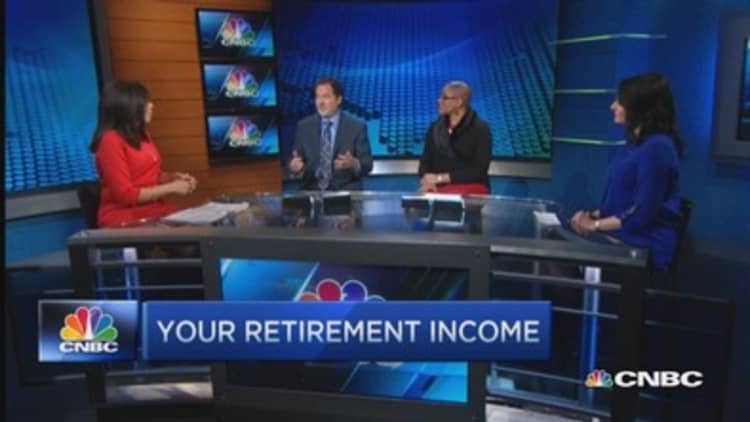


Balances in 401(k)s and IRAs have reached record highs, according to new data from Fidelity. But that may not mean much for your retirement.
The average 401(k) balance at the end of the first quarter was $91,800, up 0.5 percent from last quarter's then-record numbers and up 3.6 percent from a year ago, according to the analysis by Fidelity, the nation's largest provider of 401(k)s. Among employees participating in a 401(k) for at least 10 years, the average balance hit $251,600, up 12 percent from a year ago.
IRA balances also reached a record, with Fidelity reporting that the average Q1-ending balance was $94,100, up 5 percent from last quarter. Among consumers who have both a 401(k) and IRA, combined balances average $267,200, up 2.2 percent from last year.
Read MoreSurge in 401(k) millionaires as balances hit highs
Much of the increase stemmed from more consumers saving for retirement, and boosting their contributions. More than 1 million workers raised their contribution rate during the first quarter, according to Fidelity. The average contribution rate remained at 8.1 percent of employees' salaries, a record set during the fourth quarter, while employer contributions climbed from 4.1 percent in the previous quarter to 4.4 percent.
IRA contributions dropped slightly from the fourth quarter, from an average $3,270 to $3,150, the report notes. But the overall percentage of consumers contributing to those accounts rose 7 percent over the same period.
Read MoreHave you done this with your 401(k)?
Still, the retirement outlook remains dismal for many consumers, with a new Employee Benefit Research Institute study finding that 1 in 5 elderly Americans dies broke. Fidelity's figures are limited to accounts it manages; only 49 percent of workers have access to a retirement savings plan at work.
"Yes, the balances are increasing, but it's not near enough what people need," said certified financial planner Carolyn McClanahan, director of financial planning at Life Planning Partners in Jacksonville, Florida. Opinions differ on just how much that might be—one recent Legg Mason survey reported many investors think they'll need at least $2.5 million, versus the $1 million figure many advisors float.
Read MoreHow much do you really need to save for a good retirement?
The magic number, for most consumers, is very personal. "People should plan for the day they should no longer work," said McClanahan. For a bare minimum, consider how much you'll need to cover basic needs—shelter, food health care—in retirement.
Another common rule of thumb is to save 10 to 15 percent of your income for retirement, including the employer match. By that measure, the average 12.5 percent Fidelity customers are contributing to their 401(k)s is right on track. That's still a tough benchmark for many Americans to reach though, said McClanahan. "Always save at least enough to get the match," she recommended. "Then save every little bit you can."


